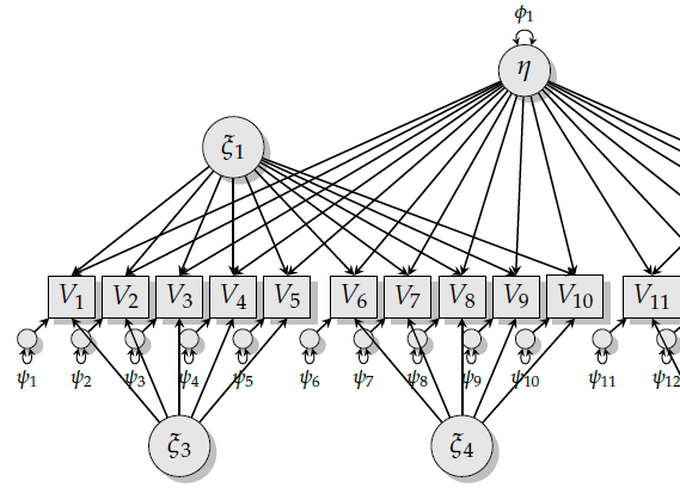It is not enough to simply continue to invent models in order to address substantive research problems. At some point, there is often a need for individual researchers to select among one of several competing models. This model selection process is partly holistic in that it balances theoretical concerns, evaluation of overall model fit and relative model fit, and concerns regarding overfitting or model complexity. The ultimate goal is to pick an interim model that we believe has good utility, yet is also parsimonious and may generalize to other datasets. My research in this area seeks to provide computationally efficient ways to perform model selection, winnowing down the number of available models, and help inform model selection choices based in part on parsimony.
Model Selection and Model Complexity

Model Selection and Model Complexity
Posts
A regularized network model (graphical lasso) with high rates of missing data
Motivation
This post assumes you are interested in doing network modeling and have missing data. To be more specific, suppose you …
Publications
The Accuracy of Bayesian Model Fit Indices in Selecting Among Multidimensional Item Response Theory Models
Item response theory (IRT) models are often compared with respect to predictive performance to determine the dimensionality of rating …
A comparison of latent variable and psychological network models in mental and physical health symptom data: Common output metrics and factor structure
Purpose Much research is still needed to compare traditional latent variable models such as confirmatory factor analysis (CFA) to …
Parsimony in Model Selection: Tools for Assessing Fit Propensity
Theories can be represented as statistical models for empirical testing. There is a vast literature on model selection and multimodel …
A Comparison of Limited-Information Test Statistics for a Response Style MIRT Model
An increased use of models for measuring response styles is apparent in recent years with the multidimensional nominal response model …
Model Selection for Monotonic Polynomial Item Response Models
One flexible approach for item response modeling involves use of a monotonic polynomial in place of the linear predictor for commonly …
On Lagrange Multiplier Tests in Multidimensional Item Response Theory: Information Matrices and Model Misspecification
Lagrange multiplier (LM) or score tests have seen renewed interest for the purpose of diagnosing misspecification in item response …
Model Specification Searches in Structural Equation Modeling with R
This article introduces and demonstrates the application of an R statistical programming environment code for conducting structural …